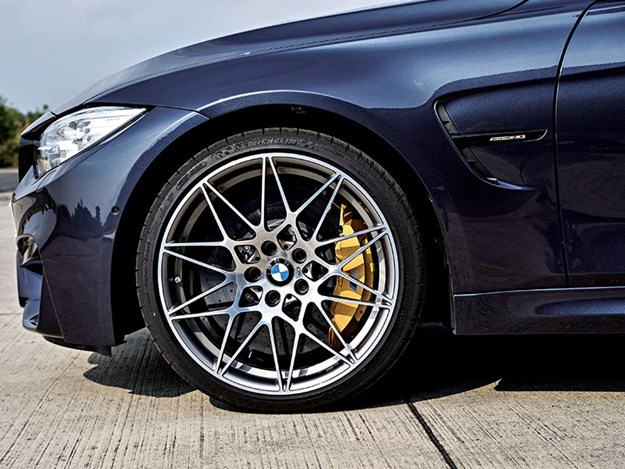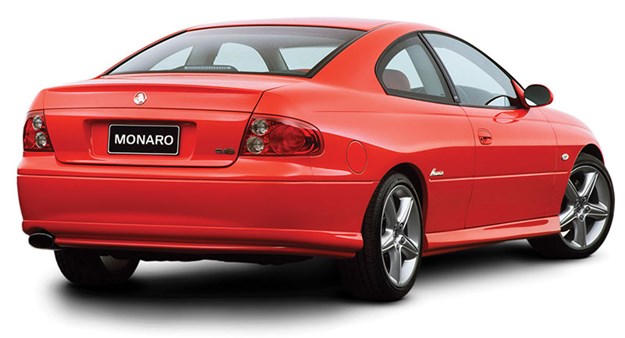The latest and greatest - Morley's World 461



|
What can happen when you confuse something new with something better
Over the years, I’ve watched a bunch of blokes make the same, dopey mistake. They somehow wind up infatuated with their secretary/kids’ babysitter/neighbour’s wife and then turn their back on the woman who has put up with their bad moods, sleep-farts and leaving the dunny seat up for the last three decades. This, you might suggest, is human nature and proof that ‘till death do us part’ is a back-seat promise too far, but I reckon it’s also what can happen when you confuse something new with something better.
Car-snobs do it, too, and it kind of gets stuck in my craw. You know the sort of bloke: He’ll waltz into a conversation and start bagging out old tech on the basis that his new car features all this stuff designed to make the car go faster and keep the planet safe. His car can get to 100 in under five and emits only lavender-puffs. My old dinosaur, meanwhile, wouldn’t outrun a three-legged horse and runs on orphans’ tears. You ask him. And as for having to press a clutch pedal when his car has a computer and an electric actuator to do it for him? Don’t make him larf.

CVT is a droning horror according to Dave
Now, I’m not going to try to tell you that electronic injection doesn’t have its advantages over a carby. Or that ABS brakes and stability control don’t save lives. But to assume that something is better just because it’s newer is forgetting one important thing. And that is that all this new tech hardly ever brings an across-the-board improvement. Oh sure, it’s probably a good thing for the vast majority of car owners, but for folks like us, it doesn’t always work out that way.
Let me start with CVT transmissions. For most people who wouldn’t know a transmission if it had just been inserted in their mud-button, a CVT is an improvement because it saves petrol. But for me and maybe you (I’m not gonna live your life for you) a CVT is a droning horror of a thing that completely disguises any personality the engine might have. Actually, I’m kind of that way inclined about any tranny that shifts for me. Stop doing me favours! Give me a clutch pedal and a rifle-bolt-shift five-speed any day (six gears is a bit try-hard, doncha think?).

No electronic injection used here
And what about that newfangled electric power-steering versus the old hydraulic type? The new stuff might save a few milli-litres of guzzoline per 100km, but it just can’t compare for feel and feedback with the hydraulic stuff. Again, for most people, steering feel is that sensation they get when they clobber a kerb at 60km/h. So it doesn’t matter, and they might as well be saving those few drops of ULP. But my psyche gets down the road much better when I can feel what the front wheels are doing and I can gauge how much grip my tyres are generating at that precise moment. See what I mean? For the masses, newer tech generally is better (or it wouldn’t attract the cubic dollars it costs to develop) but for you and I there’s a fair chance it sometimes represents a backward step.
And here’s some more stuff to think about next time you start to become infatuated with having the latest and greatest…

Single four-barrel carb and a restrictor plate did the job for Nascar
The world’s fastest accelerating cars (top fuellers) don’t use electronic injection. In fact, they get by with a mechanical injection system which is regulated by what’s called a ‘pill’ which is fundamentally a resistor and controls the flow of fuel depending on the size of the hole in the pill. No kidding! Tuning relies on changing to a pill with a larger or smaller hole. Compared with multi-sensor, sequential, electronic injection, the top fueller’s set-up is the original blunt instrument. But it can get that killer-rail from rest to 160km/h in about 0.8 seconds, can cover the first 400m in under 4.5 seconds, pull near enough to 6G at peak snot and make 11,000 or so horsepower in the process. So not too shabby, then. Seems fair to say it works okay.
Until very recently, NASCARs didn’t use fuel-injection of any sort. Fact is, they’d crank around a tri-oval at near enough to 200 miles-per-hour for 500 miles with the small block screaming at well north of 9000rpm. And they did it all on a single four-barrel carb. And a restrictor plate!

Not long ago single piston sliding calipers were used and worked perfectly well
Now, brakes. Old Mate the know-it-all probably wouldn’t lower himself to drive a car that didn’t have eight-piston calipers and fully-floating rotors. Fact is, right up to fairly recently 2014, actually BMW’s killer little M3 had used single-piston, sliding calipers. And I don’t ever remember an M3 running out of brakes on me during track testing. And if you want to get really pernickety, those same top fuellers we were just talking about do most of their braking courtesy of a – ahem – parachute. If that aint a low-tech but effective solution, I don’t know what is.
Multiple overhead camshafts? Cool if you’re tuning for every last kilowatt, but if you’re running a nice, big, lazy V8 with a redline of 6000rpm or so, what’s the point? Sixteen pushrods will do the job just as well, and actually offer up a few advantages. Really? Hell yeah, a pushrod V8 is shorter and narrower than one with big, fat DOHC heads on it. The OHV deal will also be cheaper to make, simpler to maintain and, unless you’re into showing strangers your engine, nobody else will care anyway.

Should venetian blinds be standard in Australia?
Like I said, I’m not turning my back on progress, but technology has to be appropriate technology, not just for tech for tech’s sake. And anyway, people like us are pretty safe. While ever we’re happy driving our pushrod-engined, drum-braked, carburetted old dears, nobody is gonna bother us. Till we stick a parachute on the back, anyway.
I’ve been thinking about the geographically-specific things car-makers add to their products to make them suitable for a particular climate or set of conditions. Lots of cars in the frozen north come standard with a sump-heater which plugs in to the mains and keeps the oil from freezing in the bottom of the engine. Mass market cars in the US often have softer-than-ours suspension set-ups to cope with the monotonous, concrete roads in the Midwest states like Minnesota and Iowa with their never-ending series of expansion joints that send a jolt through a car that’s set up too firm. In Japan, there’s a whole class of car with an eensy-weensy engine and a tiny footprint, all aimed at making some kind of sense in crowded Tokyo where you have to prove you have the space to park a car before you’re allowed to buy it (at least that was the case for many years, maybe it still is…).

DOHC V8 isn’t small
So what has our unique climate given us? Not much, really. Oh sure, we championed the big four-door with a straight-six for many years, but SUVs buggered that. So what should an Aussie-delivered car have as standard? Well, windows shades would be a good start. Plenty of European makers have these pull-up screens over the rear windows and they’d make all sorts of sense here in a hot, UV-riddled land populated largely by pasty white folks. And what about a fridge? Pretty much the first thing anybody building a touring four-wheel-drive fits is a decent fridge-freezer on a slide-out. But wouldn’t the average interstate journey in the family car be enhanced by the addition of a chilled centre-armrest?
Let’s say, you’re standing in the dealership, about to sign on the dotted line. Now the sales-dude wants to know whether you’d like the floor mats and slimline number-plates or the six-can cooler between the front seats to sweeten the deal. Dunno about you, but if this was me, floor mats and flash number-plates would be ten deep at the tip. Meantime, I’m scouring the classifieds for a cheap, second-hand Engel to bolt into the tray of the MBC parts chaser. Keeping your Bundaberg ginger beer cold and your Mars bar in one piece? You know it makes sense.

A quick fix to glovebox blues
Who said mechanics are under-paid? Fellow UC toiler and CV8 owner, Higgo, has just visited the Melbourne Bloke Centre with his gorgeous red Monaro in tow, asking me about a fix for the glovebox in the two-door. Seems some time ago, he opened the glovebox and it went all limp like a puppy that doesn’t want to be picked up.
The deal was he’d turn up at the MBC just before midday, I’d see if I could fix the glovebox and, if I could, he was buying lunch at the pub. Thanks to understanding how some Holdens work, I already had a fair idea of what the problem was and, as it turned out I was right: The hinge pin on one side of the glovebox had jumped ship and was hiding down at the bottom of the box. Once I found it, a bit of braille work had it back in place and the glovebox swinging like a gate. Higgo’s shout.
Now, back at the MBC with a full belly and a warm glow, I figured I’d work out the pay rate for that job. It literally took 30 seconds to identify the pin and replace it, and, on the basis of the pub’s $20 parma-and-pot deal, I reckon that works out to 40 bucks a minute or $2400 an hour. That’d be 91-grand for a 38-hour week, or a bit better than $4 million a year. Might be time to talk to your boss. Except I don’t think Higgo’s hiring.

Caps under cars? Yep...
Wheel-tub time machine
Here’s my piece of advice for youngsters getting into messing around with cars. If you’re gonna work under a car on a hoist, it pays to wear a cap of some sort to keep the grease and spiders out of your hair (assuming you still have any). But here’s the crux of my advice: Don’t wear it with the brim covering your eyes. If you do, I guarantee you’ll bang your head on something a lot harder than your melon within the first minute of going in under there. (And if your head is, indeed, harder than a lower control arm, well done you.) Wear the cap backwards so nothing obscures the view just above your forehead. Doesn’t mean you won’t bash your scone on that suspension arm or chassis rail, but at least you’ll see the barstard coming. Don’t forget, the human head has a fabulous blood supply, so ultimately, you’ll thank me in claret.
Speaking of wearing your cap backwards, I walked into an outback pub once where there was a sign on the bar proclaiming: This is Australia, we wear our caps the right way around here. I pointed out that my grandad fought in WW2 so that I could wear my cap any damn way I wished. Discussion closed. Beers poured. Sometimes you gotta question what passes for authority. That’s a whole other story.
From Unique Cars #461, Jan 2022
Unique Cars magazine Value Guides
Sell your car for free right here
Get your monthly fix of news, reviews and stories on the greatest cars and minds in the automotive world.
Subscribe

.jpg)












